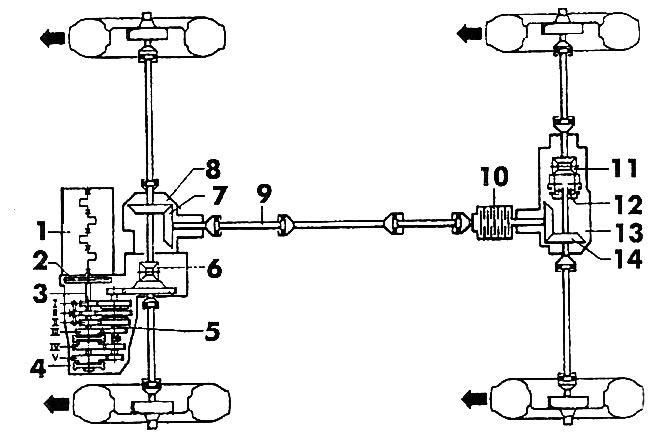
Pic. 382. Scheme of transmission of all-wheel drive vehicles: 1 - engine; 2 - clutch; 3 - drive shaft; 4 - gearbox; 5 - drive shaft; 6 - front cross-axle differential; 7 - front angular gearbox; 8 - output gearbox: 9 - cardan shaft; 10 - viscous coupling; 11 - rear cross-axle differential; 12 - freewheel; 13 - rear axle gearbox; 14 - rear angular gear
The front and rear axles of these vehicles are interconnected by a viscous coupling (viscous coupling), and the rear axle differential is equipped with a freewheel. When one of the wheels of the front axle slips due to an increase in the speed of the transmission shafts, the silicone fluid inside the viscous coupling quickly heats up with a sharp increase in its viscosity, while the clutch plays the role of a partially or almost completely locking center differential, increasing the traction ability of the rear axle wheels. When the vehicle brakes, the rear axle freewheel engages, preventing the circulation of power between the axles, which allows the vehicle to maintain good stability and control when braking.
When driving a four-wheel drive car, you need to remember that in general it is more stable when driving on slippery roads and when cornering. However, it behaves less predictably at the moment of the start of the skid, since both drive axles can get into the skid, and the so-called general demolition of the car will occur.

Visitor comments